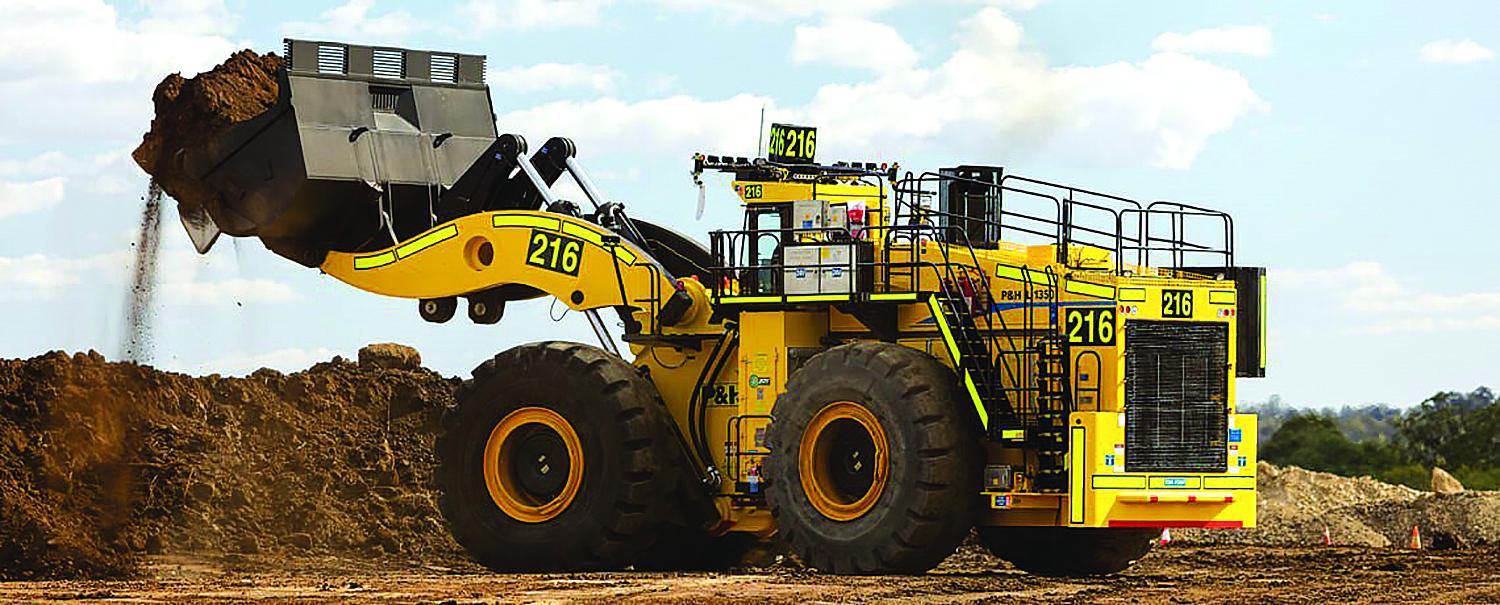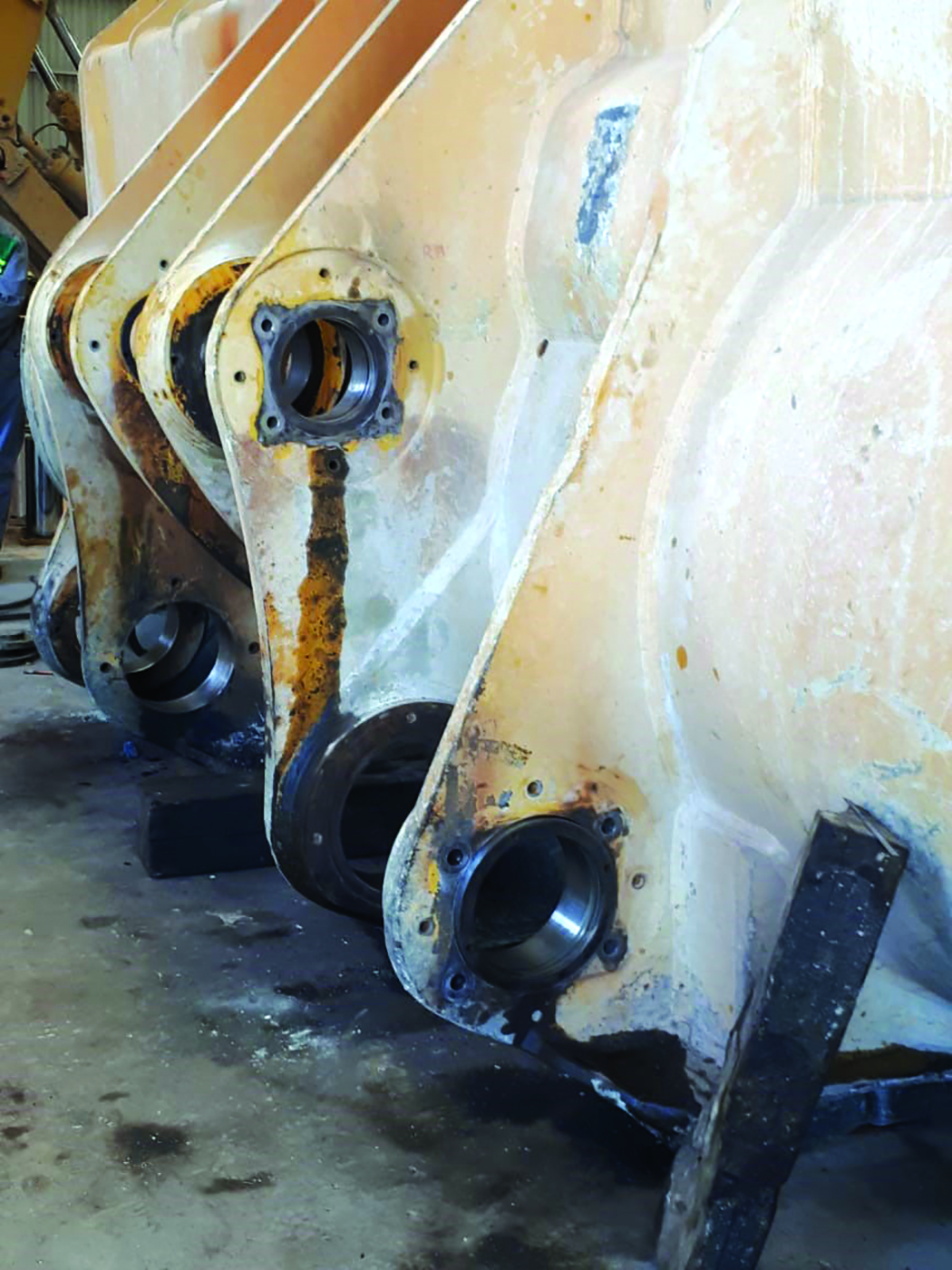
After experiencing favorable results from installing polymer-based bearings in heavy-duty pumps at several of its mines, Grupo Mexico also has ordered similar bearings for use in certain applications on its Komatsu wheel loader fleet.
Mining is notoriously hard on bearings, and their critical role in maintaining machine operability amplifies their overall value far beyond just item cost – add in the expense associated with installation, inspection, lubrication, replacement and possible production shortfalls due to unexpected failure to get a true picture of their importance.
Thordon Bearings, a Canadian supplier headquartered in Ontario, said Grupo México, the world’s fourth-largest copper producer, began installing Thordon self-lubricating bearings in 2014 and is still expanding their usage throughout its operations.
 Thordon’s Mexico-based distributor TZ Industrias first supplied and retrofitted ThorPlas-Blue bearings to vertical turbine pumps operating at Grupo Mexico mines in Sonora and Nacozari, and the mining company has continued to specify Thordon solutions for other equipment, including heavy industrial vehicles.
Thordon’s Mexico-based distributor TZ Industrias first supplied and retrofitted ThorPlas-Blue bearings to vertical turbine pumps operating at Grupo Mexico mines in Sonora and Nacozari, and the mining company has continued to specify Thordon solutions for other equipment, including heavy industrial vehicles.
“The ThorPlas-Blue bearings we retrofitted in 2014 have lasted significantly longer than the Ultra-High Molecular Weight Polyethylene (UHMPE) pump bearings they replaced, leading to a number of new bearing orders,” said Arturo Selvas, director, TZ Industrias.
“These pumps process a mix of water and traces of sulfuric acid, which is more demanding than other applications that deal only with only water and sand, so they needed a tougher, longer-lasting, more robust solution. The original bearings were costly and difficult to replace, requiring regular greasing, but we found that the ThorPlas-Blue material are capable of withstanding the corrosive effects of sulfuric acid, with no grease requirements,” said Selvas.
TZ Industrias’ initial scope of supply was for bearing material machined to fit 54 pumps at the Buena Vista del Cobre and Operadora De Minas De Nacozari operations. TZ Industrias expects to
retrofit a further 189 pumps in the coming months.
Given the performance of the ThorPlas-Blue bearings in vertical pumps, however, Grupo México also ordered bearings for use on some of its Komatsu wheel loaders. TZ Industrias supplied and installed 33, 314-mm-diameter (12.36 in.) and 18, 116-mm-diameter (4.57-in.) ThorPlas-Blue bearings for use on Komatsu 600 series loaders. A current project involves trialing Thordon’s polymer bearing technology on a P&H 4100 series electric rope shovel.
The company claims that with no greasing requirement, its self-lubricating thermoplastic ThorPlas-Blue material provides long wear life, low friction, high abrasion resistance and dry start-up capability. Bearings can operate in water and chemicals up to 80°C (176°F) and 110°C (230°F) dry and can withstand design pressures up to 45 MPa (6,527 psi).
Other Mexican sites using pumps retrofitted with a Thordon bearing solution include a Newmont gold mine in Zacatecas and the ArcelorMittal/Ternium joint venture’s Peña Colorada iron mine in Colima.
Drone-based Planting Can Reduce Time, Costs of Reforestation
Although mining activity is often associated with deforestation, by some estimations it’s a lesser contributor to the problem – accounting for about 7% of forest losses and degradation – than commercial and subsistence agriculture (73%) and urban expansion and infrastructure (10%). Nevertheless, while mining’s direct impact on forests is often limited, its indirect and cumulative impacts can be significant, according to a paper* published by Chatham House, a UK-based policy institute.
For example, mining’s direct impact includes land-use change at mine sites, and downstream pollution and environmental damage. The sector’s indirect and cumulative impacts can be more significant, including those associated with the development of road, rail and port infrastructure for transport and export of minerals, and the impacts associated with inflows of workers and other economic activities such as logging as infrastructure opens forests up.
The paper explores the impacts of large-scale mining on forests, against the backdrop of rising demand anticipated for many mineral commodities. The study assumes that alongside the depletion of accessible reserves and declining ore grades across the sector, mining is likely to push further into forest landscapes, increasing the risk of deforestation and forest degradation. It expands upon the key themes of a research workshop which was held at Chatham House in May 2019.
Apart from the increased scrutiny and pressure that the industry is likely to receive as competition for natural resources such as water, timber and farmland heightens, reforestation of mine lands presents the prospect of another method to indirectly cut GHG emissions from mining – in this case, even long after mining ceases. Simply put, trees sequester CO2 and store carbon in biomass. Mining companies can integrate reforestation into their ESG strategies, provided the price is right.
A French climate-tech startup company has focused its efforts on developing what it claims is a unique solution for large-scale reforestation of degraded ecosystems, using drones. Instead of simply planning a monoculture reforestation for a tract of land, MORFO says it conducts a detailed analysis of the soils and the surrounding biodiversity in order to recreate viable forests which it will monitor for years to ensure sustainability and vigor.
MORFO says one of its specially equipped drones can reforest up to 50 hectares per day using seed encapsulation technology – 50 times more than traditional reforestation methods, according to the company, which says it has successfully carried out projects in Gabon (in collaboration with the mining and metallurgical group ERAMET), French Guiana and Brazil.
The company points out that in its reforestation strategy, humans and drones are complementary. In general, drones are:
• More efficient – They can plant between 20 and 100 times faster than humans. A single drone can treat up to 50 hectares per day and plant 180 bolls (seed capsules) per minute.
• Cost savers – They can be as much as five times cheaper, because of their speed of planting, but also because planting by drone avoids the need for a plant nursery.
• Safer – They are able to access areas that pose high risk for human activity; e.g., in rugged or extremely remote terrain.
However, MORFO explains that at each stage of a project – analysis of the terrain, choice of seeds, planting, monitoring of evolution – human intervention remains crucial. The company uses scientists, employed by MORFO or by partner laboratories and universities, as well as technicians, agronomy experts, drone operators and seed specialists. The company says it also collaborates with members of local entities associated with a project who assist in preparation and, depending on the project, may conduct some replanting in a traditional way.
The capsules carried by the drones have several advantages over conventional direct seeding, according to the company:
• They offer a growing medium with opti-
mal humidity and biological richness for the plant.
• Their physical structure is resistant to impact when dropped, resulting in adequate burial in the soil to initiate the vegetation cycle.
• They allow a storage period compatible with the planting seasons in different regions of the world.
MORFO says basic components of its capsules are sourced locally to support local economic networks and avoid the risk of ecosystem disruption due to the implantation of exogenous plants.









